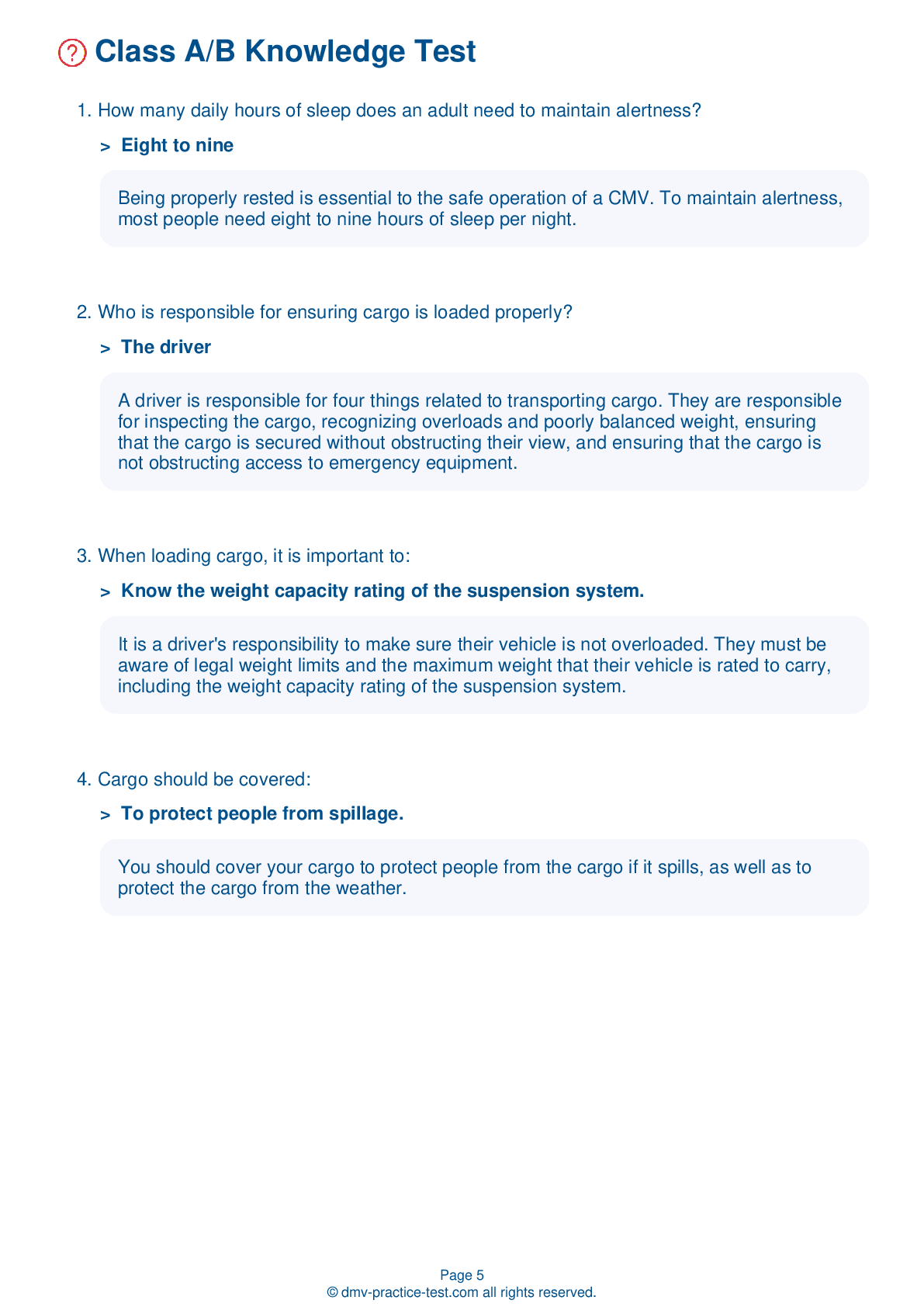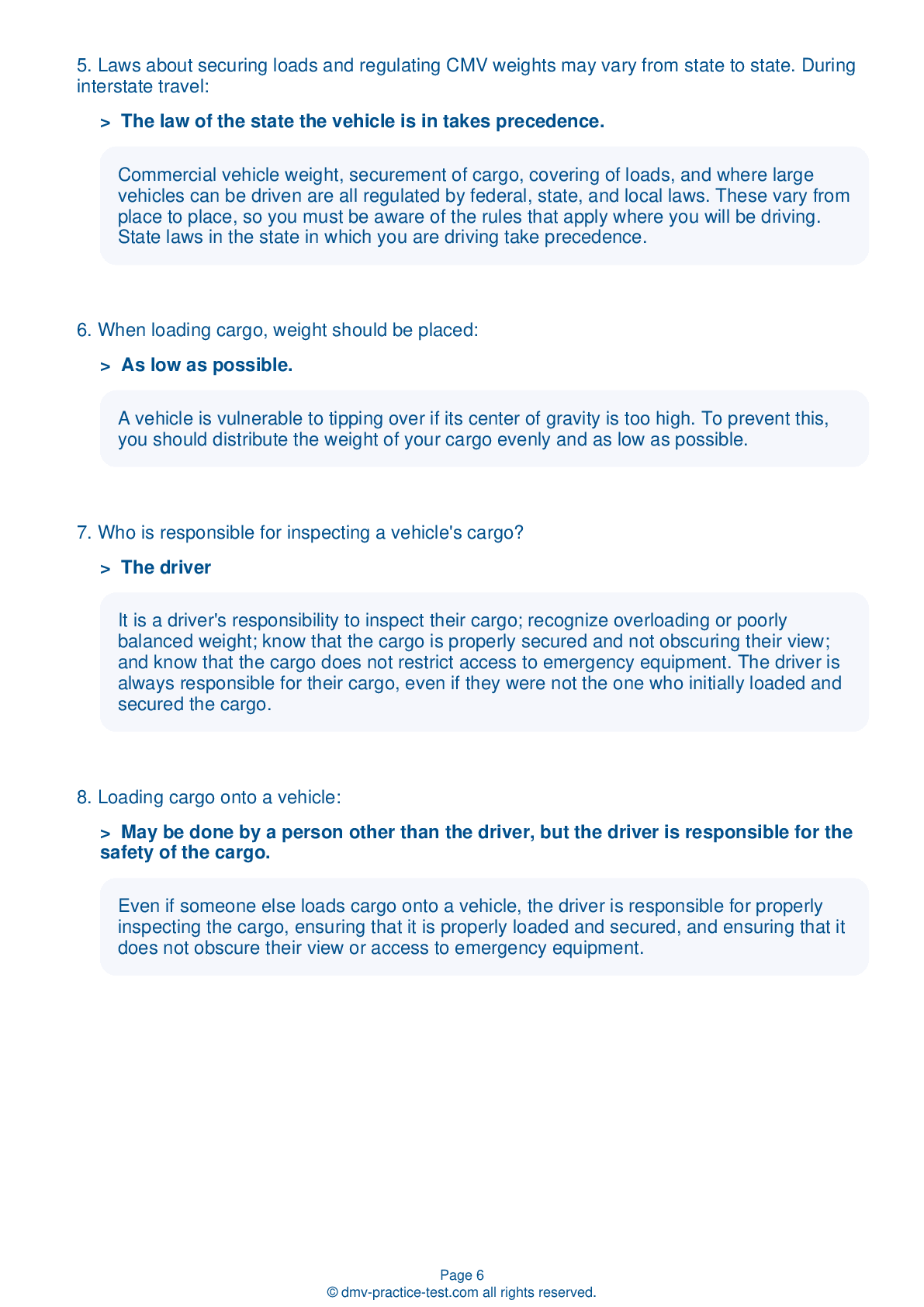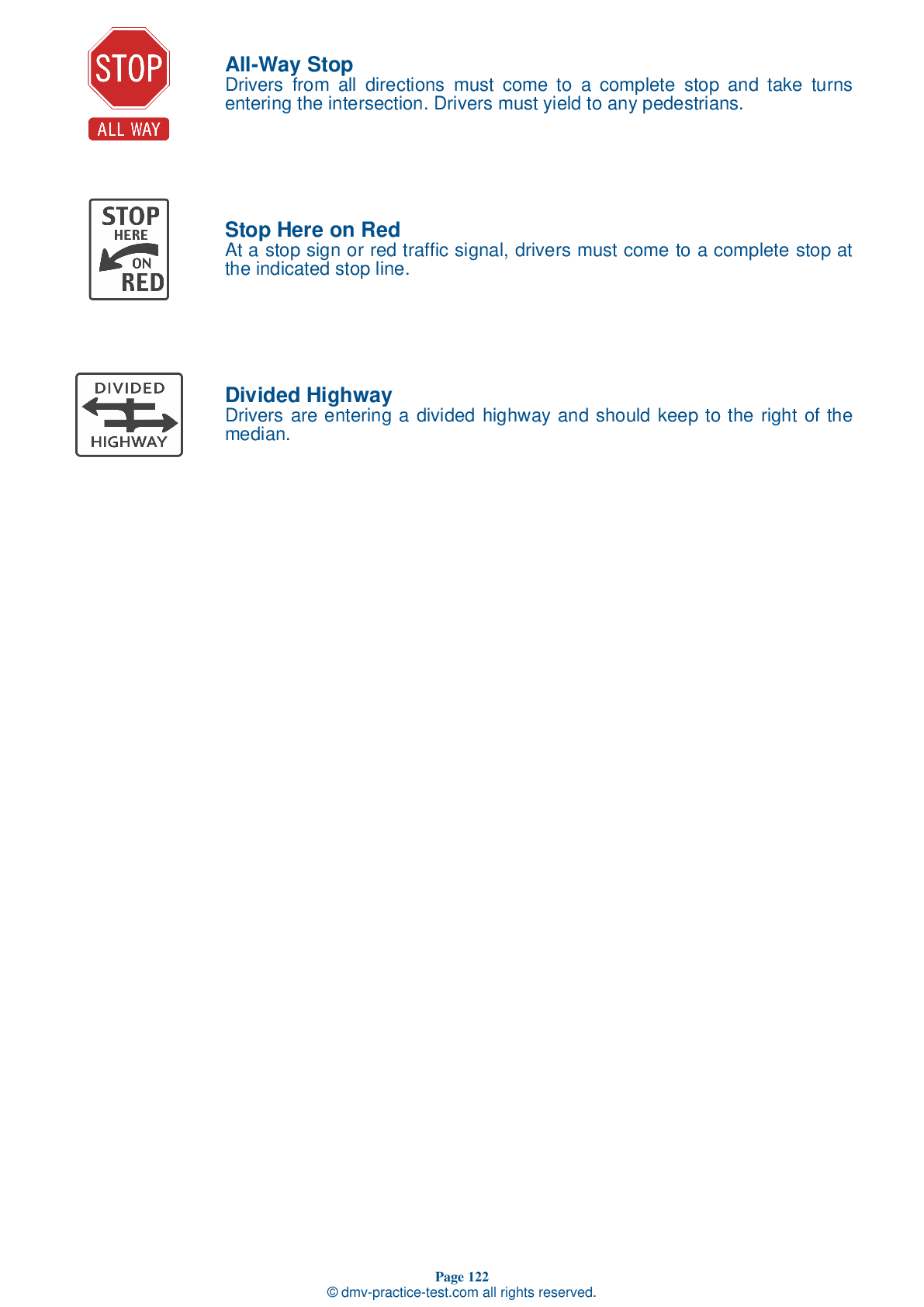Tank #2
Tank Endorsement Test | Connecticut 2025 #2 Page 2 of 3
Train for FREE with our Connecticut tank endorsement practice test online. The official exam test consists of several obligatory parts, with all of them checking your knowledge of different blocks of road rules. If you need to obtain a CT tank license in 2025, practice as much as possible. Free sample tests published on our website will help you check and improve your knowledge and boost your grades. Please bear in mind that DMV requirements for issuing a CDL tank vehicle endorsement may vary from state to state.
20
16
20
8 . If you apply for an original or renewal HazMat endorsement, you must undergo a background check through which agency?
Secretary of Defense
To obtain a hazardous materials endorsement, you must pass a background check conducted by the Transportation Security Administration (TSA).
9 . To help prevent a rollover, cargo should be:
Placed on the driver’s side of the trailer.
To reduce the risk of a rollover, the weight of cargo in a trailer should be kept as low to the ground as possible. Weight should not be placed primarily on one side of the trailer as this could make the trailer lean, increasing the risk of a rollover.
10 . You may be able to identify a distracted driver by if they are:
You may be able to tell that another driver is distracted if you can see them drifting within a lane or across lane dividers; traveling at inconsistent speeds; being preoccupied with a cell phone, a map, food, or other items; or engaging in conversation with passengers.
11 . To complete a Uniform Hazardous Waste Manifest, you must:
If you are transporting hazardous waste, you must carry with you a Uniform Hazardous Waste Manifest. The manifest must be signed by hand.
12 . When a shipper packages hazardous materials, they certify:
A shipper of hazardous materials must certify on the shipping paper that the shipment has been prepared in accordance with the rules.
13 . If a product requires a "Poison Inhalation Hazard" placard, the placard must be used when transporting:
The product in a non-sealed container.
For applicable materials, the "Poison Inhalation Hazard" placard and the appropriate hazard class placard must always be displayed, even for small amounts of the materials.
14 . If required, ____ identical placards must be placed on a vehicle.
Eight
When hazardous materials placards are required, a vehicle must display four identical placards. A placard should be placed on the front, on the rear, and on both sides of the vehicle.
2025 Connecticut | Frequently Asked Questions
A CDL Class B license in Connecticut allows you to operate single vehicles with a gross vehicle weight rating (GVWR) of 26,001 pounds or more, or any such vehicle towing a vehicle not exceeding 10,000 pounds GVWR. It includes vehicles like straight trucks, large buses, segmented buses, and trucks towing smaller vehicles.
A Class B CDL license in Connecticut enables the holder to operate single vehicles with a gross vehicle weight rating (GVWR) of 26,001 pounds or more, or tow a vehicle not exceeding 10,000 pounds GVWR. This includes straight trucks, large passenger buses, segmented buses, dump trucks with small trailers, and trucks towing smaller vehicles.
To acquire a Class B CDL license in Connecticut, you must be at least 21 years old (18-20 for intrastate driving), possess a valid Connecticut driver's license, pass a vision test, and successfully complete a knowledge test. After that, you must obtain a Commercial Learner's Permit (CLP), hold it for 14 days minimum, and pass a skills test.
In Connecticut, you must be at least 21 years old to qualify for a Class B CDL license for interstate transport. However, if you plan to drive only within the state (intrastate transport), you can qualify at 18 years old. It's important to note that additional requirements must also be met.
Specific endorsements are not necessary for a Class B CDL license, but they can expand your job opportunities. Endorsements certify additional skills like operating a school bus (S), passenger vehicle (P), or tank vehicle (N). You can also get an H endorsement for transporting hazardous materials. Each endorsement requires passing an additional knowledge test.
The Class B CDL skills assessment in Connecticut includes three parts: a pre-trip vehicle inspection test, a basic vehicle control test, and an on-road driving test. These tests assess your ability to inspect your vehicle, control the vehicle in various situations such as backing and turning, and safely operate the vehicle in traffic.
Yes, Class B CDL license holders in Connecticut are restricted to driving single vehicles with a gross vehicle weight rating (GVWR) of 26,001 or more pounds, or a towed vehicle not exceeding 10,000 pounds GVWR. They cannot drive a combination of vehicles (like a tractor-trailer) unless they have a Class A CDL. Additionally, they must comply with federal hours-of-service regulations.
Yes, the written Class B CDL test in Connecticut can be taken in languages other than English. The Connecticut Department of Motor Vehicles provides the test in several languages. However, federal regulations require that all CDL holders must be able to read and speak English sufficiently to converse with the general public, understand highway traffic signs and signals, respond to official inquiries, and make entries on reports and records.
Yes, you can request accommodations for the Class B CDL written exam in Connecticut if you have a disability. The Connecticut Department of Motor Vehicles complies with the Americans with Disabilities Act (ADA) and provides reasonable accommodations like extra time, a separate testing room, or use of special equipment. Be sure to make your request well in advance of your scheduled test date.
Yes, if you fail the Class B CDL written test in Connecticut, you can retake it. However, you must wait at least 7 days before retesting. There's also a retest fee that you'll need to pay each time you retake the test. It's recommended to study the manual thoroughly before retaking the test to increase your chances of passing.



